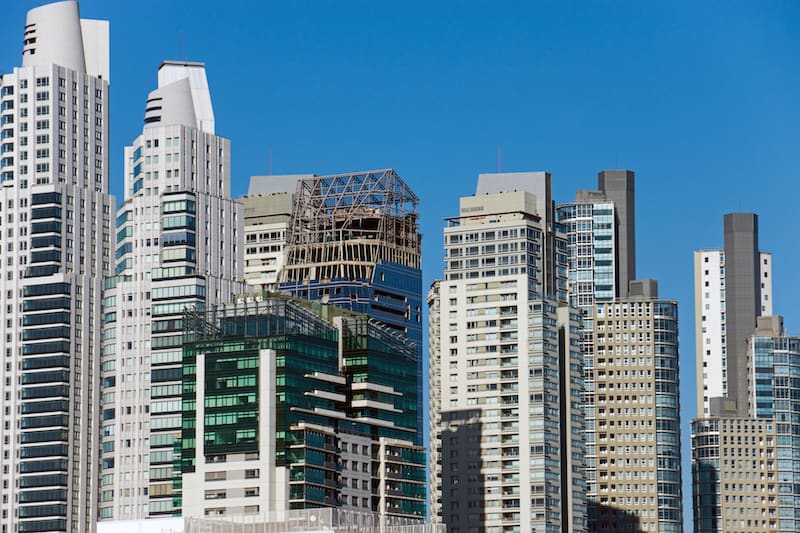Here is part five of my new blog series with definitions and terminologies used in ICI Real Estate.
View all of the posts here: A-C / D-H / I-M / N-R
Sale or Leaseback – An owner-occupied property that is sold to a third-party investor. The previous owner becomes the tenant that pays rent to the new owner. This tactic allows property owners to convert their ownership (equity) into cash while still occupying the property. The seller’s (now the tenant’s) lease term must be for two or more years.
Secured Compartmental Information Facility or Sensitive Compartmented Information Facility (SCIF) Space – Highly secure space that meets specialized design guidelines and restrictions for building systems relating to data, power, communications, security, ductwork, ventilation and more. The highly controlled facilities are required by firms such as defense contractors or law firms that deal in sensitive industries.
Service Center or Showroom – A type of flex facility characterized by a substantial showroom area, usually fronting a freeway or major road. (Typical characteristics are shown in the Industrial Building Types Matrix.)
Shadow Space – A portion of leased space that is not being used by the tenant. This area can include unused space that a tenant leased and is holding for expected future growth. It can also include unused space that was previously occupied but is no longer used as a result of downsizing the company’s workforce. Shadow space is difficult to measure because it is not officially marketed or tracked in industry databases. (Synonym: phantom space)
Shell Space – Space within a property that is currently not built out.
Short Sale – When the sale price of an asset is less than the amount owed to the lender and when the lender accepts this amount as full payment for the loan. Those funds not repaid to the lender will be written off.
Side-loading Dock – A loading dock configuration designed to facilitate the loading and unloading of a vehicle through its side.
Single-tenant Office Building – A building for which there is a single lease obligation.
Speculative – A building developed and constructed without any preleasing in place. Construction commences without a prelease when the developer believes there is so much demand for that type of building in that market or submarket that a lease commitment is bound to come through.
Stabilized Cap Rate – A stabilized cap rate is the ratio between the net operating income produced by a property upon achieving target occupancy, and its purchase value.
Stacking Plan – A floor-by-floor and suite-by-suite graphical representation of each floor and suite within a building. The plan shows the suite number, the square footage of each suite and the tenant occupying each. On many stacking plans, lease expiration dates are also provided to give a quick view of the occupancy exposure within a building.
Straight-line Rent – The accumulation of rental income (including months that have free rent, discounted rent and fixed-rent increases) divided by the term of the lease will generate a straight-line rent. Straight-line rent provides a way to compare rents on various properties using a consistent methodology.
Strip Shopping Center – A strip shopping center is an attached row of stores or service outlets that are managed as a coherent retail entity with onsite parking usually located in front of the stores. Open canopies may connect the storefronts, but a strip center does not have enclosed walkways linking the stores. A strip center may be configured in a straight line or may have an “L” or “U” shape. (See Retail Building Types Matrix.)
Sublet Space – Space offered for lease indirectly by a tenant rather than directly by a landlord.
Submarket – Submarkets are geographic divisions of markets. These smaller divisions or boundaries are generally recognized and accepted by the real estate industry and the business community in a market and region. Submarkets are geographic boundaries that delineate core areas that are competitive with one another, and together they constitute a generally accepted secondary set of competitive areas. In the real estate industry, submarkets are building-type specific and are nonoverlapping contiguous geographic designations with a cumulative sum that matches the boundaries of a market. They contain properties sufficient to provide meaningful information for aggregate statistics.
Suburban – Suburban means a geographic area that contains a variety of property types arranged in a setting that is less dense than neighboring urban areas. This broad term can be defined or measured a number of ways and is often defined relative to urban and exurban areas.
Super Flat Floors – Concrete floors with minimal variations in elevation from point to point. The floors are found primarily in warehouses with automated systems. Precisely calibrated and leveled picking machinery and racks require level flooring to ensure proper operation.
Super-regional Shopping Center – The enclosed, large anchor tenants that sell general merchandise and fashion offer more variety than does a regional center. (See Retail Building Types Matrix.)
Sustainable Development – In commercial real estate (CRE), this term generally means the practice of developing, redeveloping and operating CRE in ways that cause zero, minimal or improved environmental impact.




